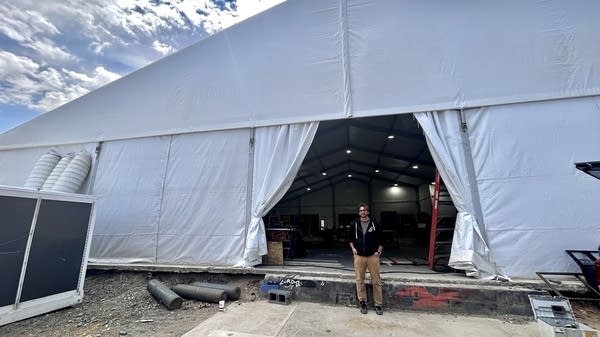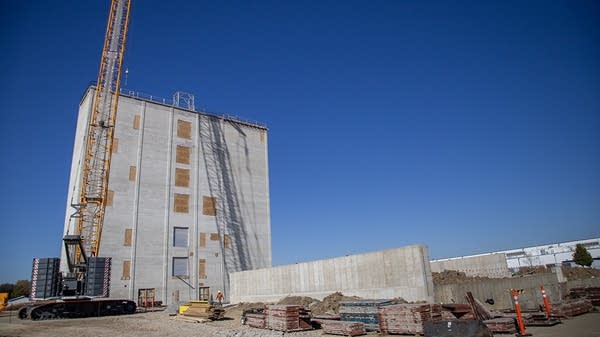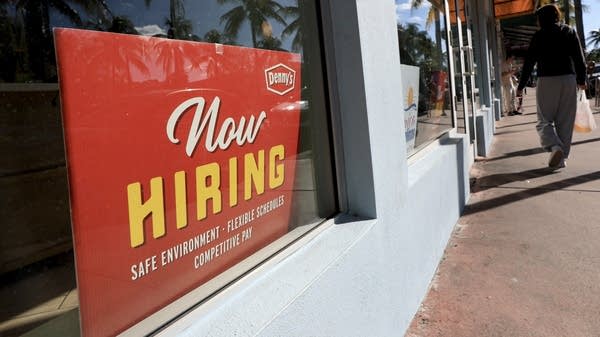How flood-damaged businesses are rebuilding in Asheville, North Carolina
After Hurricane Helene flooded a crucial corridor for commerce, businesses are rethinking how to build back smarter.

Rebuilding a business after a natural disaster can be a slow and difficult process. That’s certainly the case in Asheville, North Carolina, where Hurricane Helene engulfed hundreds of structures in mud, water and debris last fall.
In the low-lying sections of the city that sit near the French Broad and Swannanoa Rivers, the damage was so overwhelming that many businesses announced they wouldn't rebuild. Others, however, believe it’s worth the risk, so long as they rebuild with resilience in mind.
Mark Oliver, a co-owner of Foundation Woodworks, is one of the people taking the leap. Before the storm, he ran his studio out of a 100-year-old building that was once a leather tannery.
“We got about 16 feet of water in the building, and so the front of the building fell off,” Oliver said, as he pointed to the water line that towered over much of the space in his damaged studio.
While Oliver had regular business insurance, he did not have flood insurance to cover the $500,000 in damages.
“If you’d ask me what I was doing, I was going to quit and go work for a friend,” he said. “Bankruptcy was something we were looking at, which was scary.”
But just before filing for bankruptcy, his church and other volunteer organizations stepped in. They donated labor and money to rebuild — and made him a makeshift studio space — a massive, industrial tent.
“It seems crazy ‘cause it is crazy,” he laughed. “But now we've got a shot to not only get our business back but help other people get theirs too, so it's exciting.”
Since his studio operates under a co-op model, other local craftsmen also use the space. During the workday, the tent is abuzz with woodworkers sawing and hammering everything from shelves and bowls to acoustic guitars.
“The second we got our power hooked up. It was so nice and freeing,” he said. “It's just nice to work again.”
The tent is temporary. Oliver is repairing his original workshop and hopes to reopen this summer, with a better drainage system and a stronger roof.
He said he also plans to “be a little more nimble” in preparation for another storm. “The conversation is Penske Trucks. We're just going to bring in trucks and load them. Everything's on wheels and just be really cautious of any rain that's coming.”
But if flooding does ruin his business again, he said he’d probably throw in the towel.
“I’ve got one major rebuild in me,” he said. “If we ever get this much water again, I’m out.”
Lisa Raleigh is the executive director of RiverLink, a nonprofit that works to protect the French Broad River.
She said it’s crucial that businesses return to the riverfront. “Because unless you have people invested in a river, unless you bring an economy to a river, sometimes it's harder to get people to care and protect the asset,” she said.
At the same time, it’s important that businesses consider building techniques that work with the flow of the water, rather than against it.
She wants Asheville to remember that another “thousand-year” flood could happen at any time.
“Hurricanes and other tropical storms are getting bigger and wetter and are moving further inland into mountainous areas,” she said.
So businesses should rebuild with the expectation that they’ll flood again, she said.
As Devin DeHoll works to resurrect his rock climbing gym, he said it’s a great chance “to rethink the way that we're doing things.”
The gym is an airy concrete building that was filled with about 10 feet of water in the storm. But the bones and steel structure are fine, he said, which he takes as a promising sign.
So this time around, his team is getting more creative about flood-proofing. The HVAC system will be near the top of the building, and it’ll have tall, bright windows.
“Next time if it were to flood … it’ll break the windows and the water will flow through the building. And it won't knock the walls down,” he said.













